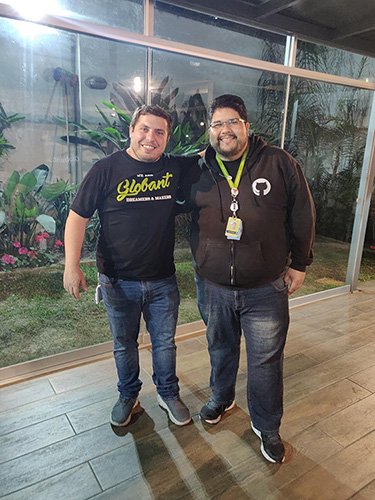How do you best ignite cultural transformation?
They say that organizational culture is difficult to convey and even harder to change. Or is it?
Culture plays a key role in the success of every company, but developing it isn’t so easy, especially when teams come from different companies where there are different norms and customs in play. How can companies scale and expand their business while maintaining the values and vision that helped them establish themselves at the beginning?
The Globant office in Lima went from being distanced from the company’s culture to becoming one of the company’s star sites. In just three months it became an attractive, innovative office with a high level of commitment. The office began to gain visibility and draw attention to the number of events and initiatives linked to the company’s culture, to the point that the company’s global leadership team decided to visit Lima to personally see the changes being made. And how was this transformation achieved?
A culture plan is a key ingredient of organizational evolution. Some key elements of the culture plan for the Lima office were: empowerment of a cultural ambassador, technology that enhances connections between people, and high doses of creativity.
How are we doing at home?
Opened in 2014, the Lima office had grown 60% by 2018, as a result of an acquisition and strong organic growth. The Lima office was still grappling with the integration of new employees coming from diverse organizational cultures when Globant acquired software developer Belatrix in August 2019.
In the merger’s planning stage, a challenge was flagged. Belatrix’s operation in Peru had almost three times as many employees as Globant did at the time in the Andean country. Moreover, the environment in the Lima office was not the most conducive to a transition: the connection between employees was not optimal; motivation indicators were below the Globant average; and, corporate values needed to be strengthened.
Improving the mood of the site was essential for the merger. “We needed to strengthen our Globant Lima ecosystem in order to successfully bring Belatrix into our culture. We couldn’t think of integrating the two companies without first solving our own organizational culture challenges,” says Sofia Cestau, Project Manager of Integrations for Corporate Development, who was also the point person for the merger with Belatrix.

The challenge: turning the tables
Globant Lima understood that to win the cultural battle it needed to guarantee the participation of certain individuals who would drive change from the inside, who carried the company’s values in their DNA and would inspire others to connect and engage with the organization on another level.
One name topped the list of candidates: Agustín Milanesio. He had already traveled to Globant India with the same objective and had participated in different high-impact company initiatives and events. Given his characteristics, Agustín was the perfect cultural ambassador for Lima.
How to recognize a potential cultural ambassador in your organization:
- Has spent considerable time in the organization and has won the trust of different people organically and spontaneously.
- Is an influencer (StarMeUp metrics can help identify them in a simple, transparent and objective way) and has the ability to lead teams of influencers.
- Represents the values of the organization, which are part of their DNA.
- Tends to be involved in the improvement of the office climate, makes new employees feel comfortable, helps their peers, and often promotes and organizes social activities outside the office.
- Is 100% proactive, creative, innovative and drives their ideas with passion and enthusiasm.
- Has strong soft skills; does not necessarily belong to the human resources team or have specific technical knowledge; connects with others beyond their role and function.
Another key figure in the Lima office’s transformation was Iván Olivares, a Chilean Glober who was working on a temporary basis in Lima. With the same concept of integrating the site to Globant, Iván helped to replicate many of the initiatives that were already working in Chile and helped to put the site’s best face forward among the entire company.
The first step was taken, but the roles of Agustín and Iván were not going to be enough to create an atmosphere conducive to the merger within a tight timeline. Some questions still loomed, such as: How to best reach everyone? How to transmit the “Globant way”? And how to engage everyone in change?

The second step involved what Globant knows best how to do: use technology to help connect people, empower them and generate cultural transformation.
StarMeUp OS, the cultural platform created by Globant, was the second key ingredient to the Lima revolution. What is it and how can it generate such a big impact in such a short time? StarMeUp relies on the values that define an organization. Thanks to technology, it drives interactions and increases productivity through recognition, gratification and support, thus creating a strong culture.
It is a platform that is readily available to everyone, giving them a voice to highlight their peers’ positive actions and their values, which ultimately makes each individual feel part of the organization. Thanks to artificial intelligence, interactions are measured and crucial insights about employee behavior are generated.
To help people connect, StarMeUp OS also includes a solution for people to share images of their most meaningful moments: BeThere, a social network that has a significant impact on the integration of any office, which was fundamental to the Lima office’s culture plan.